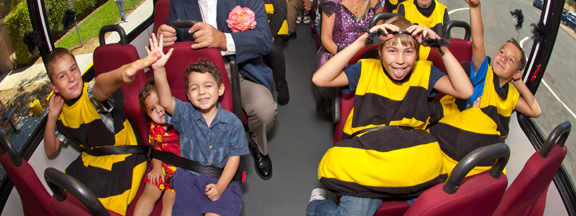
Safe Routes to School (SRTS) programs are sustained efforts by parents, schools, community leaders and local, state, and federal governments to improve the health and well-being of children by enabling and encouraging them to walk and bicycle to school.
SRTS programs examine conditions around schools and conduct projects and activities that work to improve safety and accessibility, and reduce traffic and air pollution in the vicinity of schools. As a result, these programs help make bicycling and walking to school safer and more appealing transportation choices, thus encouraging a healthy and active lifestyle from an early age.
SRTS programs use a variety of strategies to make it easy, fun and safe for children to walk and bike to school. These strategies are often called the “Five Es”:
- Education: Programs designed to teach children about traffic safety, bicycle and pedestrian skills, and traffic decision-making.
- Encouragement: Programs that make it fun for kids to walk and bike. These programs may be challenges, incentive programs, regular events (e.g. “Walk and Bike Wednesdays”) or classroom activities.
- Engineering: Physical projects that are built to improve walking and bicycling conditions.
- Enforcement: Law enforcement strategies to improve driver behavior near schools.
- Evaluation: Evaluation strategies seek to understand and document the effects of Safe Routes to School programs on travel behavior, parent and student attitudes, and a school’s physical surroundings.
Resources
National Center for Safe Routes to School
Caltrans Share the Road, Arrive Alive! videos and other resources
